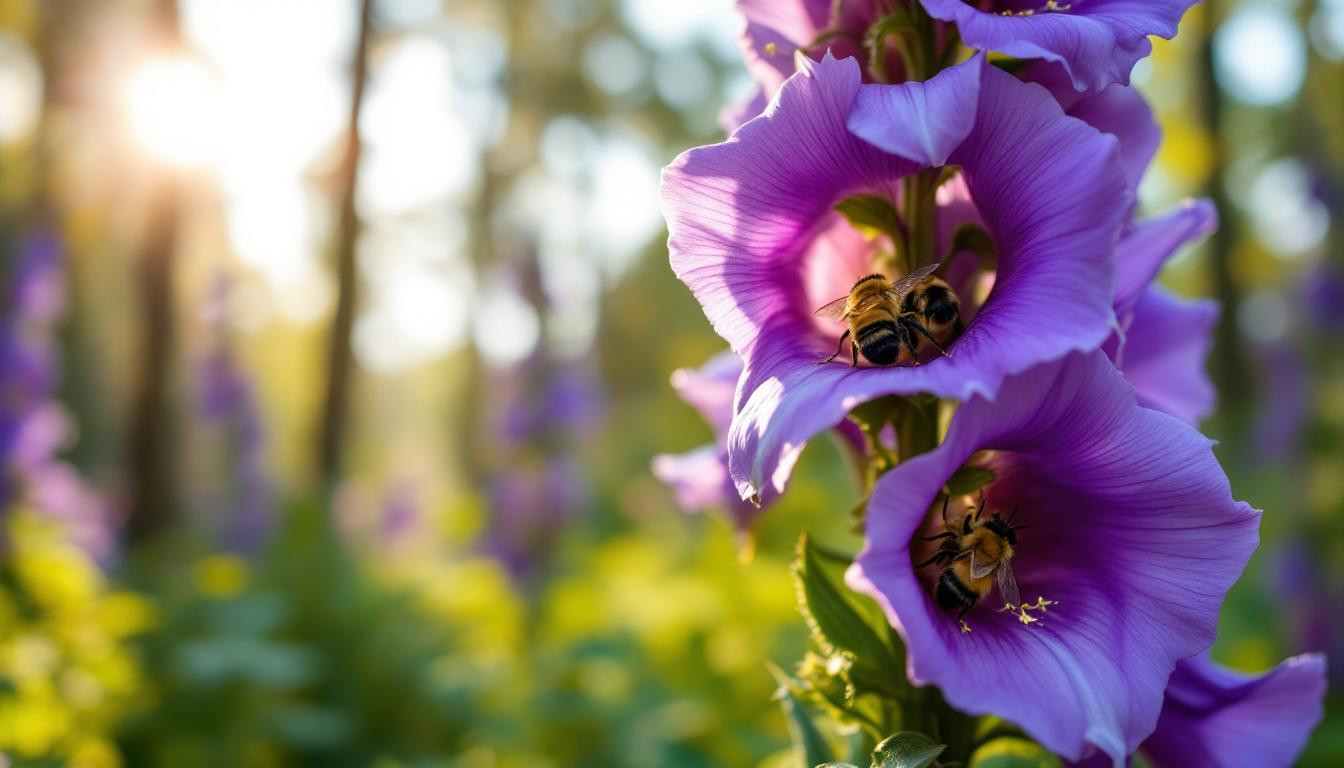In the enchanting world of garden design, few plants offer the dramatic vertical interest and architectural beauty of foxgloves. These majestic biennials, with their elegant spires of tubular blooms, have captivated gardeners for centuries. Modern varieties have made them more versatile than ever, offering solutions for diverse garden styles while supporting crucial pollinators. Let me show you why these botanical treasures deserve a place in your outdoor space—and how to help them thrive.
The towering beauty that transforms garden borders
Standing proudly at heights up to six feet, foxgloves (Digitalis spp.) create instant vertical drama in garden settings. Their bell-shaped flowers cascade down tall stems, available in a mesmerizing palette from deep purples to soft pinks, whites, and even peachy tones. “Foxgloves are like nature’s exclamation points,” explains garden designer Emma Roberts. “They draw the eye upward and create rhythm in planted spaces that few other perennials can achieve.”
Why pollinators can’t resist these flowering spires
Beyond their ornamental value, foxgloves serve as vital pollinator magnets. Their tubular flowers are perfectly shaped for bumblebees, which disappear inside like tiny miners exploring floral caves. Hummingbirds are equally enchanted by these nectar-rich blooms. By planting foxgloves, you’re not just creating beauty—you’re supporting biodiversity in an age when beneficial insects help reduce garden pests naturally.
Self-sowing superstars: nature’s perpetual gift
One foxglove plant can produce an astonishing 1-2 million seeds, making them the garden’s ultimate gift that keeps giving. “I planted three foxgloves in my shade garden five years ago,” shares home gardener Michael Chen. “Now I have a self-sustaining colony that gracefully dances through my woodland area, finding perfect spots I never would have chosen myself.”
Perfect partners: what to plant with foxgloves
Foxgloves shine brightest when paired with complementary plants. Consider these ideal companions:
- Hostas – Their broad leaves create a lush base beneath foxglove spires
- Ferns – Provide delicate texture contrast to foxglove’s bold vertical lines
- Astilbe – Offers complementary feathery blooms at a lower height
- Bleeding hearts – Their arching stems create graceful movement alongside foxgloves
Modern hybrids that break all the old rules
Traditional foxgloves are biennials, flowering in their second year. However, modern breeding has revolutionized these classics. First-year flowering varieties like ‘Camelot Mix’ and compact ‘Dalmatian Peach’ have transformed foxgloves from patient gardener’s rewards to instant gratification plants. These innovations make foxgloves as practical for low-maintenance garden designs as they are beautiful.
Essential care tips for spectacular blooms
Keeping foxgloves happy requires understanding their preferences:
- Light – Part shade to full sun (more shade in warmer regions)
- Soil – Well-draining, slightly acidic, enriched with organic matter
- Water – Consistent moisture without waterlogging
- Spacing – 18-24 inches apart to allow air circulation
The safety conversation every gardener needs
While foxgloves contain compounds used in heart medications, all parts contain toxic cardiac glycosides. Always wear gloves when handling them and keep them away from curious children and pets. Their beauty comes with responsibility—much like how other garden elements require thoughtful management.
Container growing: foxgloves for small spaces
Limited garden space? Foxgloves perform beautifully in large containers, where they create the same vertical drama as in borders filled with other flowering perennials. Container culture also allows you to move them to showcase their blooms during peak performance, much like creating the perfect centerpiece for a special occasion.
Are you ready to welcome these botanical towers?
Foxgloves stand like cathedral spires in the garden sanctuary, their bell-shaped blooms housing buzzing worshippers. Whether in woodland settings, cottage gardens, or modern containers, they offer timeless beauty with contemporary adaptability. Their self-sowing nature means a small investment yields years of vertical drama—a rare combination of spectacular beauty and effortless sustainability.
